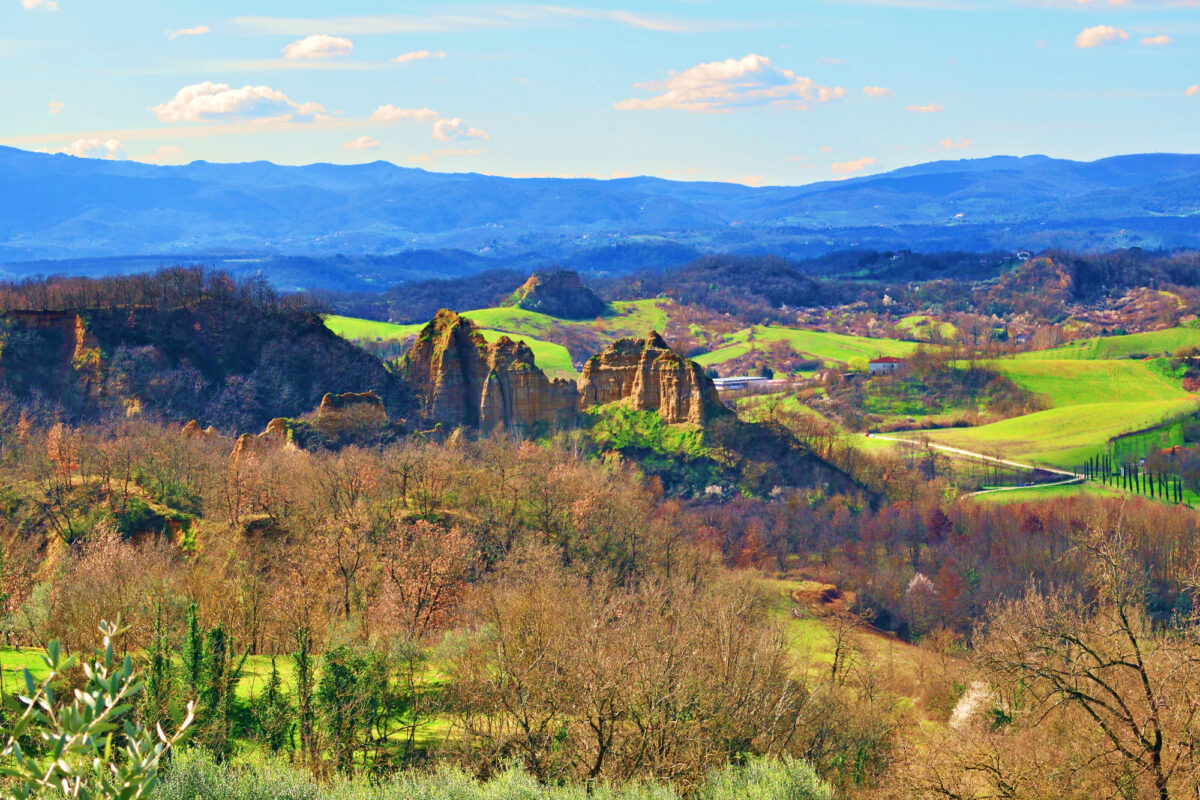A history lasting millions of years
—Historical background
Journey through the geological history of Tuscany
Google Maps
—The Ancient Cassia and the Setteponti
Every stone and every path tells centuries of life.
The Ancient Road of Setteponti is a route that meanders through the Balze (crags) of Valdarno, skirting the Pratomagno massif. Here, among the vineyards and olive groves that cover the plateau, you can feel the breath of history and touch the indissoluble bond between man and the land.
This historic route is more than just a path: it is a lifeline that has united and defined communities since time immemorial. Starting from an Etruscan route, it became part of the great Roman epic, turning into the historic Cassia Vetus: an umbilical cord between past and present, between the rolling hills and Roman innovation.
The Setteponti Road is not only a physical link between places, but a symbol of cultural connection, a thread that weaves together histories and peoples, creating an identity that has stood the test of time.
Places like Gropina, Trevane and Ciuffenna are silent guardians of a pre-Roman heritage, witnesses of a world that still breathes beneath our feet. The refined Roman organisation has left indelible imprints in the area, revealed by archaeological finds and place names that tell of a prosperous agricultural life, praised by great names such as Pliny the Elder, Varrone and Tito Livio.
